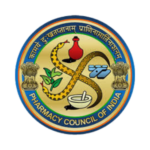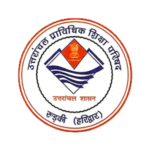Introduction
It has been a prevailing change with the pharmacists in managing chronic disease over last few years. As a healthcare provider, pharmacists can play their part in managing chronic conditions such as Diabetes Mellitus (DM), Hypertension and Asthma. This article provides an overview of the different roles pharmacists are able to fill with regards to chronic disease management, discusses a pharmacist-led medication therapy and diabetes care program at a VA medical center, then illustrates its fact on health outcome.
The Silent Extended Arms of the Pharmacist in Chronic Disease Management
Not only are pharmacists the gatekeepers of all medication, but they also play important roles in chronic disease state management on your healthcare team. They have the knowledge and expertise to help patients optimize health
Role of Pharmacist in diabetes care

Medication Management
Pharmacists are a key component to chronic disease management, particularly around diabetes care with the pharmacist ensuring that patient should have be adherent to their medications. This includes counselling on how to take their insulin, control their blood glucose and understand the importance of taking prescribed medication.
Patient Education
Pharmacists can be a tremendous asset in terms of counseling patients on lifestyle modifications such as diet and exercise essential for diabetic management, in addition to the pharmaceutical modalities provided by a health care provider. We offer patient-specific advice and encourage patients to attempt active participation in their health status.
Monitoring and Follow-Up
Follow up and monitoring are mainstays in chronic disease care. Pharmacists monitor how the patients are doing on their medications, modify these as needed and to overall support them to achieve optimal health.
Comprehensive Care Programs
The pharmacist-led chronic disease programs can help provide optimal care to the patients suffering from any of these conditions. Such programs typically iInclude medication therapy management, patient education and ongoing monitoring to hep achieve improved health outcomes
Commons based health Collaborative models
• Pharmacists in Collaborative Health (PCH) describe pharmacists who work collaboratively with physicians, nurse practitioners, and other health care providers. > “Working as team will enable patients get the best quality care that addresses broad an overview of their chronic conditions.
Exemplar Program Case Studies
For example, evidence is widespread about the efficacy of pharmacist-led chronic disease programs. Their results and the benefits to clinical outcomes, for example, with blood glucose control or patient adherence to drug regimens can be impressive. For diabetes care programs have shown some phenomenal and improving results.
Impact of Pharmacists on Chronic Disease Outcomes

Improved Medication Adherence
The improved medication adherence is one of the most important outcomes of pharmacist-led care for chronic diseases. Pharmacists achieve this by offering tailored advice and follow-up to ensure that patients understand the serious consequences of not taking their medications as prescribed.
Enhanced Patient Outcomes
Studies demonstrate medicine and health outcomes of patients with chronic diseases improve when pharmacists direct interventions based on evidence. A common example is the improved blood sugar control and outcomes in patients with diabetes when on-going counselling and monitoring are performed by pharmacists.
Cost Savings for Healthcare Systems
Pharmacists managing chronic diseaseswhich also reduces healthcare cost Pharmacists mitigate the occurrence of complications, admissions and hence reduce health care spending to become a part of an efficient system as they manage diseases effectively.
Innovations in Chronic Disease Management Technologies
Telehealth and remote monitoring
Telehealth has changed the face of chronic disease management Pharmacists can now do teleconsultations, digitally track patient adherence and provide interventions as needed in a more timely manner
Digital Health Tools
Mobile apps and wearable devices—collectively referred to as digital health tools (DHTs)—offer pharmacists the ability to monitor objective metrics related to a patient’s health, in real time. This greater context allows pharmacists to deliver a more tailored service and use data to base decisions on when it comes to their patients.
Future Trends
Future implications Future prospectives for pharmacists through incorporation of artificial intelligence and machine learning in chronic disease management It allows pharmacists to anticipate what patients are likely to need and individualizes medications regimens by comparing thousands of variables in a patient record in real time.
Barriers and Challenges
Access to a Limited Range of Pharmacist Services
Although pharmacists offer improved outcomes in the management of chronic diseases, there is limited access to their services depending on where patients reside and live because of geographic/socioeconomic issues. We need to make sure that all patients get the benefit of pharmacist care.
Regulatory and Policy Issues
Numerous regulatory and policy obstacles may be responsible for the underutilization of pharmacists in chronic care management. The advocacy for policy changes that broaden their practice has been critical to maximizing the impact pharmacists can make in patient care.
Healthcare Team Integration
It will continue to be critical that the role of pharmacists in healthcare teams is well integrated and developed, if chronic disease management is to succeed. Establishing positive, collaborative relationships and constant communication between healthcare providersEDI Q and would help to achieve these important coordination goals.
Conclusion
Chronic Disease Management: Multifaceted Role of A Pharmacist The value of the Pharmacist as being pivotal in enhancing patient outcomes and health system–from diabetic care to pharmacist-driven chronic disease programs. With the use of new technology, pharmacists can overcome these obstacles to achieve their full potential in managing chronic diseases, ultimately contributing positively to patient out‐ comes and bettering more lives with a great value add for patients getting a life improvement.
FAQs
1.Pharmacists and Chronic Disease Management?
Management of chronic diseases such as diabetes can be very reliant on effective medication management, patient education and monitoring treatment outcomes. Pharmacists are generally involved in these processes so they play a critical role here.
2.How do pharmacists support better patient outcomes in managing a chronic disease?
They ensure patients stay on their medication as prescribed, educate them in disease management, and collaborate with care teams to improve therapy.
3.Prescribers (by medication class): For certain chronic disease states, can pharmacists prescribe medications?
Pharmacists practice with prescriptive authority in many regions, and honor a requisite for initiation or adaptation of medication therapy to manage chronic disease under collaborative agreements which specify scope of practice.
4. What types of chronic diseases can pharmacists help manage?
Pharmacists can assist in managing a variety of chronic conditions, including diabetes, hypertension, asthma, cardiovascular diseases, and more.
5. How do pharmacists support patients with medication adherence?
Pharmacists provide counseling, use medication synchronization, offer reminders, and employ adherence tools like pill organizers and mobile apps.
6. What educational services do pharmacists provide for chronic disease management?
They educate patients on disease management, lifestyle modifications, proper medication use, and recognizing adverse effects.
7. How do pharmacists collaborate with other healthcare providers in chronic disease management?
Pharmacists work with doctors, nurses, and other healthcare professionals to develop and implement comprehensive care plans tailored to each patient.
8. What is a Medication Therapy Management (MTM) service, and how do pharmacists use it?
MTM is a service provided by pharmacists to review and manage a patient’s medications, ensuring they are used effectively and safely.
9. How do pharmacists monitor and assess the effectiveness of chronic disease treatments?
They track patient progress, conduct follow-up consultations, adjust treatments as necessary, and use diagnostic tools to assess health outcomes.
10.What benefits do pharmacists offer to healthcare systems in managing chronic diseases?
Role of Pharmacists help reduce hospital readmissions, lower healthcare costs, and improve overall patient health through effective medication management and patient education.









